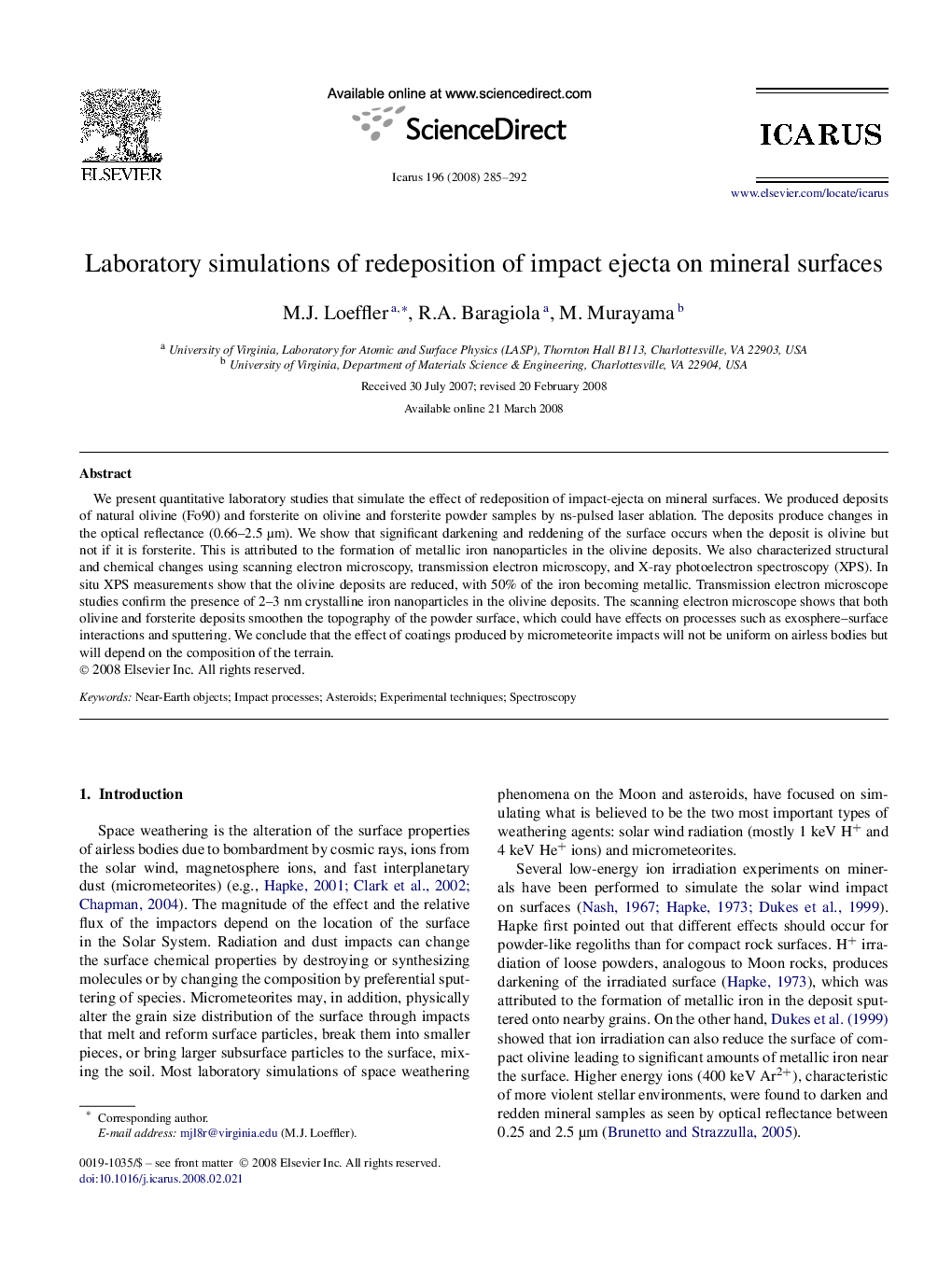| Article ID | Journal | Published Year | Pages | File Type |
|---|---|---|---|---|
| 1775147 | Icarus | 2008 | 8 Pages |
We present quantitative laboratory studies that simulate the effect of redeposition of impact-ejecta on mineral surfaces. We produced deposits of natural olivine (Fo90) and forsterite on olivine and forsterite powder samples by ns-pulsed laser ablation. The deposits produce changes in the optical reflectance (0.66–2.5 μm). We show that significant darkening and reddening of the surface occurs when the deposit is olivine but not if it is forsterite. This is attributed to the formation of metallic iron nanoparticles in the olivine deposits. We also characterized structural and chemical changes using scanning electron microscopy, transmission electron microscopy, and X-ray photoelectron spectroscopy (XPS). In situ XPS measurements show that the olivine deposits are reduced, with 50% of the iron becoming metallic. Transmission electron microscope studies confirm the presence of 2–3 nm crystalline iron nanoparticles in the olivine deposits. The scanning electron microscope shows that both olivine and forsterite deposits smoothen the topography of the powder surface, which could have effects on processes such as exosphere–surface interactions and sputtering. We conclude that the effect of coatings produced by micrometeorite impacts will not be uniform on airless bodies but will depend on the composition of the terrain.
